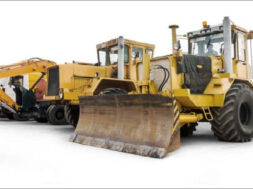
From conventional lighting to LED, lighting industry has undergone significant evolution.
The lighting market in India has evolved rapidly witnessing a tectonic shift in technology from electrical to electronics. The transition is driven by an array of government initiatives for energy conservation, rising consumer awareness about energy-efficient products, and innovative products that are in sync with the overall trend of digitisation.
“The lighting industry continues to face both amazing opportunities and grueling changes. The industry has embraced significant new standards and technologies to the benefit of customers and end-users. Now, key innovation areas which dominate the industry are connected and sustainable lighting solutions,” says Raja Mukherjee, President & Country Head –Illumination Segment, Bajaj Electricals.
“The LED market has shown increment from $29.6 billion in 2016 to around $33.1 billion in 2017. This industry is expected to reach $37 billion by the end of 2018. Market penetration of the LED lighting products has reached an impressive 52 per cent which shows popularity of LED all over world. LEDs are known for low energy consumption and eco-friendly nature,” according to Rajesh Uttamchandani, Director, Syska Group.
Syska focuses on giving consumers a better experience. Due to strong government intervention and manufacturers promoting aggressively, growth of LED lighting has become phenomenal at both local and international level.
“The technological evolution in lighting is now heading towards organic LED (OLED) which is said to be the next generation lighting source, wherein the electrical energy is directly converted into lighting through electro-luminescence”, says Sharmila Kumbhat, Director, K-Lite Industries, Chennai.
Connected lighting
According to Sumit Padmakar Joshi, Vice Chairman and Managing Director, Philips Lighting India, the latest trend in lighting industry has been the emergence of connected lighting, transforming lighting from a commodity product to a fully integrated lighting system that can seamlessly connect with a wireless network or Ethernet, allowing users to remotely control and monitor their lighting systems. The new LED lighting systems can connect and interact seamlessly with smart controls, networks, devices as well as apps to offer a customisable and tech-enabled lighting experience.
Green lighting
“Focus is on keeping up with the evolution of technology and incorporates new characteristics and innovations into their products,” says Rambo Zhang, Country Head, Opple Lighting India.
From evolution to revolution, the lighting industry reflects on how energy-efficient lighting can help pave a way towards a more sustainable future. This also involves issues like eradicating light poverty and promoting connected lighting.
Eco-friendly offerings:
LED lighting
The product range in LED lighting starts from basic LED based lighting and moves on to timer-based controlled lighting, intelligent lighting with sensor and connected lighting offerings. LED brings in energy efficiency and thereby is eco-friendly, with connected lighting solutions the same gets tracked, monitored and controlled. Be in outdoor and indoor environments. As a company, Bajaj Electricals Ltd is proud to be SEAD – Super Efficient Equipment and Appliance Deployment – award winners for creating most sustainable products in both indoor and outdoor categories.
“We are pushing the boundaries of efficiency and slashing energy consumption, where by bringing cost of ownership down,” adds Mukherjee.
SYSKA Smart Table lamp and SYSKA Smart Bulb
“Syska has recently launched a range of smart home products like Syska Smart Bulb and Syska Smart Table Lamp which are compatible with Google Assistant and Amazon Alexa,” says Uttamchandani.
SYSKA app gives easy amalgamation of the current and future products in the system. The company is continuously thriving towards improving the standard of living. Hence, they will be launching more interesting products by the end of this year.
SYSKA Smart Table lamp
3 stages dimmable – SYSKA Smart Table Lamp comes with three stages of brightness which can be adjusted according to one’s requirement and mood. He/she can easily adjust the brightness levels with the touch of a button to suit the lighting needs.
Feather touch control – SYSKA Smart Table Lamp comes with feather touch controls to switch it on/off, control its colour temperature, and its dimness (brightness) for a seamless experience.
Hands-free control with Alexa – Can effortlessly control the SYSKA Smart Table Lamp using voice commands to the Amazon Alexa.
Mood Setting – The two mood setting in SYSKA Smart Table Lamp allows fixing lighting requirements between reading and night.
Flexible Body- SYSKA’s Smart LED Table Lamp has been designed ergonomically as well as flexible to use.
SYSKA Smart Bulb
SYSKA smart bulb connects to Wi-Fi and controls every aspect of lighting from smartphone or tablet. It helps setting the light of home as required.
SYSKA Smart Home app gives the option to choose shade of light from a spectrum of 3 million colours. Alarms to switch on and switch off lights can also be set. Additionally, SYSKA smart lights gives multiple options to create own pre-formatted lighting theme, so as to set the desired mood of home.
K-Lite’s newest offering
K-Lite Landscape range includes linear wall washer, up-down lighters, led strips/neon flex, promenade lighting, bollards, under water lighting, post top luminaires, bulk heads, path finders, polar lighting and newly added series of facade lighting.
K-lite Indoor Luminaires also has a vast range of Indoor LED lighting fixtures to cater to every application like home lighting, retail lighting, commercial lighting, industrial lighting, hospital lighting, hospitality lighting, architectural lighting, etc.
The company has also supplied specialised street lighting for Varanasi City, Amritsar Golden Temple, Chandigarh – Mohali highways, Kolkata municipality, CMRL – Cochin and others to name a few. It has introduced a complete series of indoor and outdoor luminaires with the state-of-the-art LED modules facilitating lesser power consumption cutting carbon emission. Optics control and reduced light spillover for maximum and efficient total usage of the generated lumens.
“With the introduction of intelligent lighting under smart city concept, they have stepped into the smart city domain with various functions involved, through a lighting pole combined with smart lighting and allied sensors such as vehicle movement sensor for traffic monitoring and control, lighting level control during peak and non-peak hours, cameras for safety, intelligent signage pollution monitoring etc.,” says Kumbhat.
Connected lighting system from Philips Lighting
Connected lighting can further build upon and reduce the overall carbon footprint of lighting. While typically lighting is responsible for 40 per cent of a building’s electricity use, IoT enabled lighting can enable up to 80 per cent savings on this electricity consumption as compared to conventional lighting.
“Our connected lighting system for offices and a commercial building is called Interact office. By tracking occupancy patterns, changes in temperature, light levels, the system enables maximum visibility and better control, and allows building administrators to manage energy consumption based on building usage and occupancy. When not in use, the lighting can be dimmed, thereby significantly reducing the overall energy consumption,” says Joshi. “For homes, our connected lighting system is called Philips Hue, which is an IoT product in its true sense. It enables users to create and control the lighting brightness and colour through an app on their smartphone or tablet. In addition to creating personalised lighting, Philips Hue seamlessly integrates with several modern Smart Home Systems, such as Apple Homekit, Google Nest and Amazon Echo. It can help users switch off their lights when not in use, enabled through sensors or the Philips Hue smartphone app,” adds Joshi.
LED Utility 2 HV strip lights
Opple recently introduced product, LED Utility 2 HV strip light is unique and innovatively designed. The product is specially designed to consume low energy and is ideal for fixture manufacturers embracing the latest technology in the concealed lighting segment, says Zhang. It comes in six variants i.e. 3,000k, 4,000k, 6,500k, red, blue and green in a 45-m roll with a power capacity of 6W/M. Other products like LED floodlight EQ series is specially designed to consume low energy. It is a progressive light that easily replaces the conventional high bays and has 90 per cent lower energy consumption than halogen floodlights.
Temperature and light quality
Some of the challenges are that the LEDs performance depends on the temperature and must be supplied with the voltage above the threshold and a current below the rating. Another challenge faced is its light quality. Most cool-white LEDs have spectra that differ significantly from a black body radiator like
the sun or an incandescent light. Unlike incandescent light bulbs, which illuminate regardless of the electrical polarity, LEDs will only light with correct electrical polarity.
Challenges of using eco-friendly lighting
Light as a service – circular economy
Environment-friendliness starts with energy efficiency and moves to the level of circular economy — what goes around comes around. Lighting as a service is a circular economy thinking model. One of the tenets of circular economy thinking is that manufacturers will switch to providing services.
“In the lighting industry, this leads to financial innovations such as ‘pay per lux’ usage-based billing, leasing programs, and equipment end-of-life take-back programs. End customers want light, not expense capital equipment that is a pain to use and maintain,” says Mukherjee.
Monitoring actual usage, planned upgrades, maintenance, etc. becomes significantly cheaper with smartly designed connected lighting. Bio-friendly materials and disposable fixtures will be the future requirement soon.
“Customers buy any brand given to them by the shop owner. Consumers compare the prices of the brands and they buy what is low in pricing and do not pay a heed to the features very much. Hence, it is important that we create awareness about the importance of eco-friendly lights and how they are energy efficient,” says Uttamchandani.
Sustainability
Sustainability has thrown many challenges to the lighting industry. ‘Sustainable’ means – ‘which conserves an ecological balance by avoiding depletion of natural resources’. Hence, the keywords are – avoidance of natural resource depletion or optimising the usage of natural resources. Smart home concepts and eco-friendly lighting from the viewpoint of energy saving and using green and renewable energy pertain to the illumination field.
“With the high level of consumer awareness, energy saving concepts, available product portfolio for designing urban living and commercial spaces, expectation has grown multifold and lighting design has thrown many challenges. People want
the lighting to make the spaces alive and unique,” says Kumbhat.
Higher capex
“A key challenge faced by building administrators in this regard is the higher capital expenditure on these lighting systems as compared to traditional or non-connected LED lighting. While adopting sustainable lighting, users and building managers should keep a long-term view in mind. Even though this technology may require a higher capital expenditure upfront, the ROI is quite high owing to direct savings on energy consumption,” says Joshi.
Additionally, the ability to remotely monitor and control lighting can also enable organisational efficiencies in terms of uptime and productivity of the workforce. These factors need to be kept in mind while preparing a business case for upgrading to connected and sustainable lighting.
End customers want light, not expensive capital equipment that is a pain to use and maintain.
Raja Mukherjee, President & Country Head –Illumination Segment, Bajaj Electricals
Market penetration of LED lighting products has reached 52 per cent which shows popularity of LED all over world.
Rajesh Uttamchandani, Director, Syska Group
Technological evolution in lighting is now heading towards organic LED (OLED).
Sharmila Kumbhat, Director, K-Lite Industries, Chennai
New LED lighting systems can connect and interact seamlessly with smart controls, networks, devices as well as apps.
Sumit Padmakar Joshi, Vice Chairman and Managing Director, Philips Lighting India
Focus is on keeping up with the evolution of technology and incorporates new characteristics and innovations into their products.
Rambo Zhang, Country Head, Opple Lighting India
Cookie Consent
We use cookies to personalize your experience. By continuing to visit this website you agree to our Terms & Conditions, Privacy Policy and Cookie Policy.









